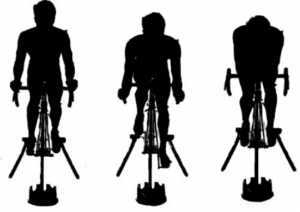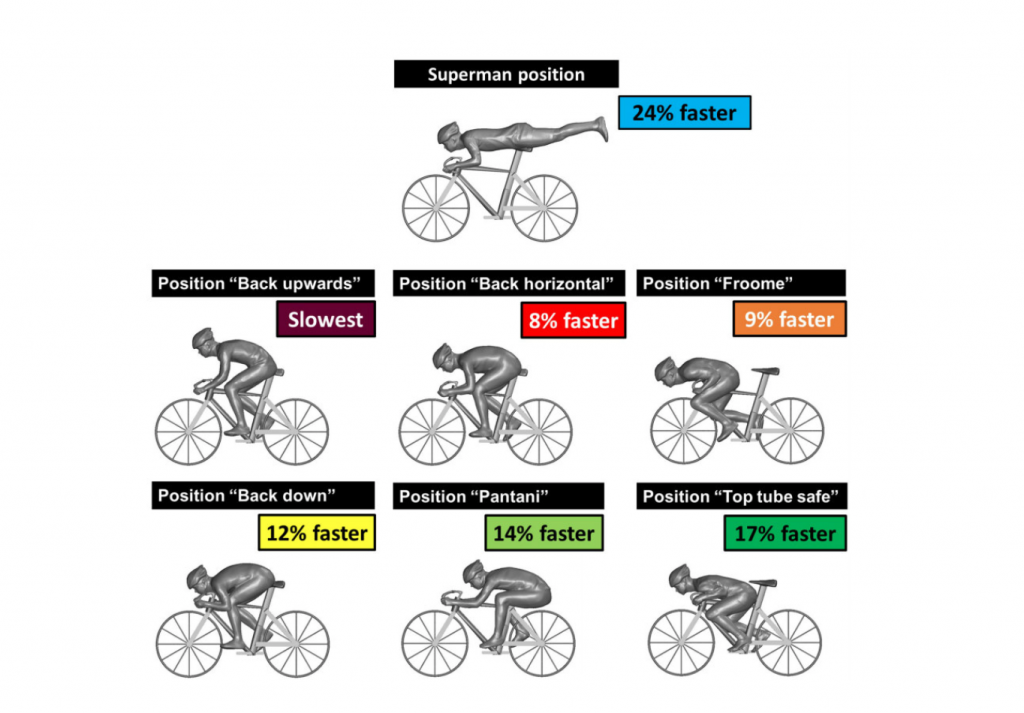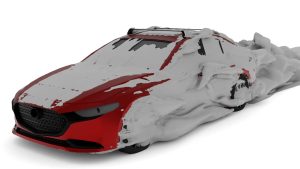The position an athlete adopts affects the maximum speed he can reach. In this article we will use the example of a cyclist to explain why.
What does the theory tell us about the importance of drag force in competition?
There are many forces involved in the speed of a cyclist: the force of gravity, the aerodynamic force, the force of your own body and the friction with the road. But it has been shown that the most limiting factor is the aerodynamic force. When you get to a certain speed, there is a point where 90% of the force comes from wind resistance. This is why, in competition, it is so important for athletes to reduce their aerodynamic drag force as much as possible.
In fluid mechanics, there is an equation that allows you to calculate the drag force:
This equation allows us to know the resistance force to the advance. Depending on how we change our posture, we will directly influence two important parameters, the cross-sectional area (S) and the value of the aerodynamic drag coefficient (cd). The speed is the most influential parameter on this drag force equation, but these two parameters are the ones that the athlete can influence.
What is the relationship between cross-sectional area and coefficient of friction?
First things first, to clearly understand what the cross-sectional area is, it is the space in the path of the wind that, in this case, the cyclist occupies. We see that, the more upright he is, the more space he occupies in this wind trajectory, therefore, the more resistance he opposes to the wind. And the more shrunk he is, the smaller his area is, the less space he occupies, and therefore, the less resistance it induces.

On the other hand, regarding the aerodynamic drag coefficient, another of the determining parameters to increase or decrease the maximum possible speed reached, this serves to quantify how aerodynamic a body can be, meaning, to know the resistance a body would present in a fluid medium such as air or water.
These two variables matter so much because when one of the two changes, it can affect your aerodynamic force. In fact, when you play with the position in your favor, you can reduce the resistance force by up to 20%.
Para que todo se entienda mejor, os vamos a enseñar las posiciones en las que el coeficiente de resistencia es de So that everything is clearer, we are going to show you the positions in which the drag coefficient is one of the lowest (it is more aerodynamic) and the highest (it is less aerodynamic), respectively.

In the image we see how the “superman” position is the fastest of all and “back upwards” the slowest. Although there are intermediate positions in which the speed the cyclist can reach changes.
The position of the cyclist influences the drag force against the air
To be able to conclude this, a study was carried out at the department of aerospace and mechanical engineering at the University of Liège, Belgium, in which 4 different positions were simulated in a wind tunnel. In this study, the influence of the cyclist’s position regarding the force of air resistance was verified.
In addition, the results of real wind tunnel tests were compared with CFD simulation results. They verified that the conclusions were practically the same, giving credibility to computer simulation, not to mention the advantages in savings in time and money of being able to simulate the aerodynamics on a computer instead of a physical facility, since it allows you to simulate any body aerodynamics without having to rent a wind tunnel.
CFD simulation within everyone’s reach
At Symula we have developed a simple and automated aerodynamic simulation platform so that any athlete can make use of this technology without needing to have knowledge in fluid dynamics. Allowing you to improve your aerodynamic performance thanks to the use of simulation.
Symula sin ser un experto.
Link to the study:https://www.researchgate.net/publication/51660070_Aerodynamic_drag_in_cycling_Methods_of_assessment
Sources:
- Universidad de León, Facultad de Actividades Físicas y Ciencias del Deporte, Juan García López.
- Bert Blocken, Eindhoven University of Technology & KU Leuven










